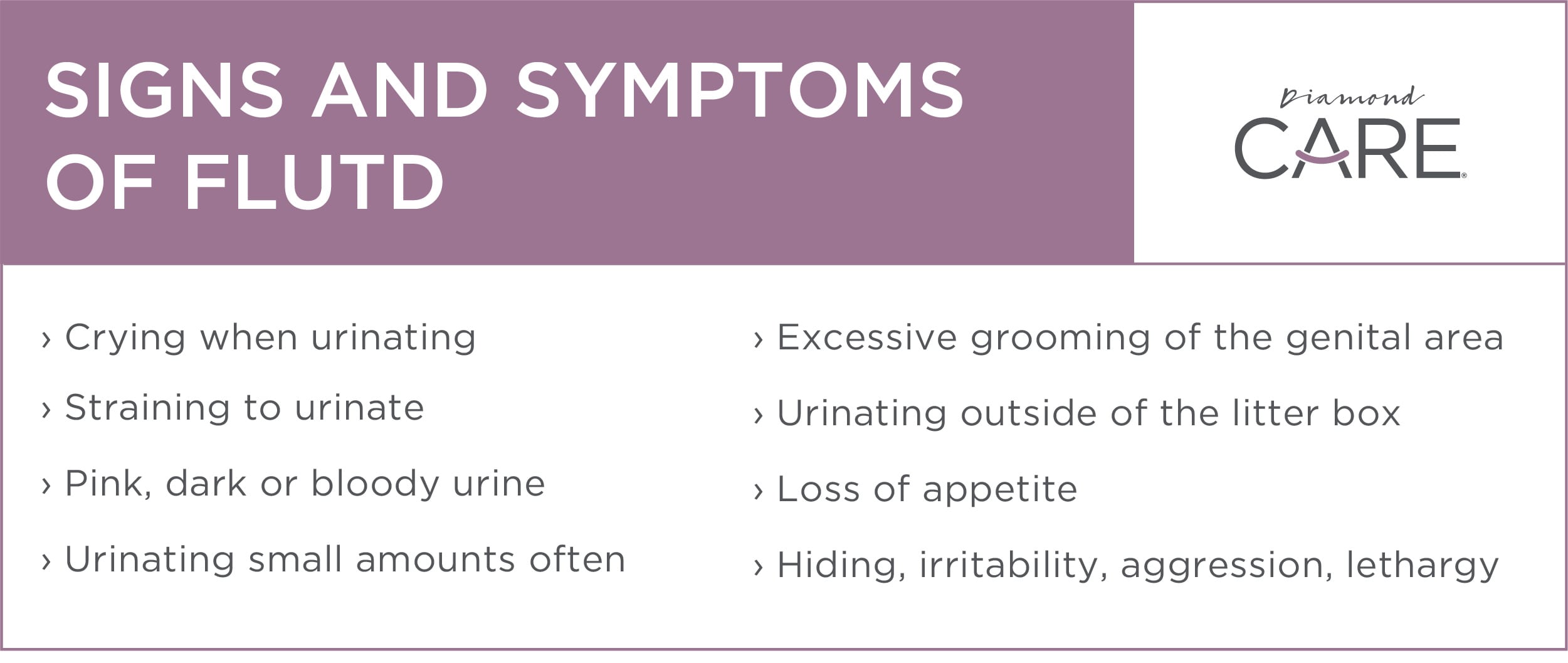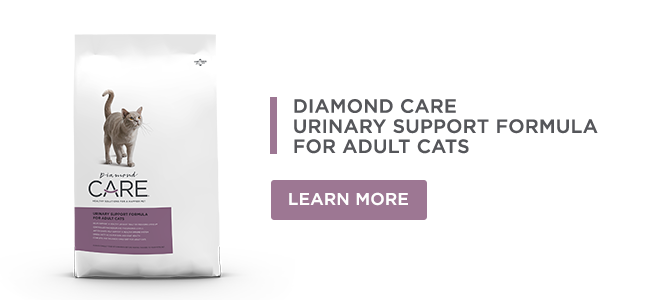Feline lower urinary tract disease (FLUTD) has been described in cats for nearly a century and continues to be a common condition today. What makes FLUTD challenging for veterinarians and cat owners is that its collection of clinical signs results from many causes. That said, veterinarians now know feline idiopathic cystitis (FIC) is the most common form of FLUTD, accounting for about two-thirds of FLUTD cases.
If your cat is urinating outside of the litter box, making frequent trips to the box, straining to urinate, or unable to urinate, call your veterinarian immediately or seek emergency veterinary care. Otherwise, read on to learn more about FIC.
What is feline idiopathic cystitis anyway?
When the cause of cystitis — bladder inflammation — in cats can’t be determined after a thorough diagnostic work-up (i.e., blood tests, urinalysis, urine culture, X-rays and/or ultrasound), the condition is called feline idiopathic cystitis. (Idiopathic means the cause of a particular condition is unknown.) Evidence of FIC doesn’t show up on test results, unlike bladder stones, urinary tract infections (UTIs), tumors or defects in anatomy. It’s diagnosed by excluding all other potential causes for the signs and symptoms.
The clinical signs and symptoms suggestive of FIC are the same ones seen in FLUTD cases with other causes:
- Crying when urinating (as a sign of painful urination) or having difficulty urinating
- Straining to urinate
- Pink, dark or bloody urine
- Frequent trips to the litter box with little to no urine produced each visit
- Excessive grooming of the genital area
- Urinating outside of the litter box
- Loss of appetite
- Hiding, irritability, aggression or lack of energy

The signs associated with FIC increase and decrease in number and/or intensity. In acute cystitis episodes, symptoms often subside within seven days regardless of treatment. Unfortunately, about half of cats that have an acute FIC event will experience another one within six to 12 months.
Theories about FIC causes
While the cause of FIC is unknown, veterinary specialists have some theories about the condition’s origins. FIC appears to be associated with irregularities in and complex interactions among the nervous system, adrenal glands and bladder. A cat’s home environment, particularly the stress a cat experiences there, also plays an important contributory role.
According to articles published by BluePearl Specialty and Pet Emergency Hospitals and Veterinary Partner, cats with FIC have been found to have an exaggerated stress response as a result of imbalances in their nervous and endocrine systems. These cats have differences in their nervous systems that make them extra reactive to changes in their world, extra anxious and extra sensitive to pain in the back half of their bodies. Specifically, studies have found FIC cats have higher levels of norepinephrine (a neurotransmitter and stress hormone) in their blood and bladder walls than normal cats. In addition, a specific class of nervous system receptors located in the bladder wall doesn’t function like they do in normal cats. As a result, increased levels of norepinephrine may:
- Increase the permeability of the bladder lining
- Increase activity of pain sensing and transmitting nerves
- Trigger nervous-system-related inflammation in the bladder
When it comes to the bladder itself, FIC cats may have damage to or defects in the bladder lining. This lining, which is a mucus layer composed of glycosaminoglycans (GAGs), helps protect bladder wall cells from harmful and irritating compounds in urine. It also helps keep bacteria and urinary crystals from adhering to the bladder wall. Defects in the GAG layer, as in the case of cats with FIC, exposes underlying bladder wall cells to urine, causing irritation and/or inflammation.
Disruption in the GAG layer also activates C fibers, the pain-conducting fibers of the nervous system found in the bladder wall. Stimulation of these nerves causes release of substance P, one of the main neurotransmitters associated with pain, anxiety and depression in people. Veterinary pain management specialists believe substance P has the same effects in cats and dogs.
The combination of inflammation and increased pain sensitivity causes cats to feel severe pain during urination. Cats then associate the litter box with the pain they feel during urination, which leads them to urinate in other places.
How to help a cat with FIC
Despite many different approaches to treating FIC cats, veterinarians now know that no known therapy is successful in shortening an episode of cystitis that has already started. However, veterinarians can manage a cat’s pain and urinary tract muscle spasms with medications during an active bout.
What seems to be the most effective approach to managing FIC in cats is addressing the stress that most likely caused the problem in the first place. MEMO, or multimodal environmental modification, involves assessing the cat’s home environment, identifying potential stressors and then modifying the environment to reduce stress. Seeing the home environment from the cat’s viewpoint is essential.
What could possibly cause a cat to feel stressed? For starters, cats are creatures of habit and like routine. Consequently, any change or disruption in daily routine can trigger stress. Common cat “stressors” that could spark an episode of cystitis include:
- Moving, whether it’s relocating the home across the country or simply rearranging the furniture in the current home
- Stress among people in the home (e.g., arguments, illness, final exams)
- Conflict between pets in the home such as cat-cat aggression
- Someone or another animal moving in or out of the home
- Construction inside the home or outdoors
- Changes in the cat owners’ schedules as to when they are home
- A stray cat outside the home’s window
- Changing to a new brand of cat food
So what changes in the environment should a cat owner make?
Litter box management and hygiene may be one of the most important parts of MEMO. Veterinary specialists in feline medicine recommend having one litter box for each cat in the home plus one more. Boxes should be placed strategically around the home in private and quiet, but not obscure, locations. Ideally, there should be at least one box on every floor of a multi-story home. Equally important, litter boxes should be cleaned frequently with some experts recommending twice-daily scooping. When washing litter boxes, use hot water and a mild unscented dishwashing detergent and avoid strong cleaners like bleach or ammonia.
Increasing water consumption is another key step in managing FIC. Increased drinking dilutes urine and the substances in it. It also stimulates increased urination which reduces the amount of time urine is in contact with the bladder wall. Feeding canned food, using a pet water fountain, and spiking plain water with a splash of tuna “juice” (the water used in packing canned tuna fish) or low-sodium broth may encourage a cat to drink more.
Providing access to several sources of fresh water and food may help decrease stress in multi-cat homes and increase drinking. Every cat should have his or her own food and water bowls to avoid conflict between cats. More options for private resting places may also benefit FIC cats, especially those living in multi-pet homes.
Finally, increased owner interaction with an affected cat may help lower the cat’s stress level. Stress-reducing interactions include petting, grooming and interactive play that mimics hunting behaviors.
For more information about improving a cat’s home environment, visit the Indoor Pet Initiative sponsored by The Ohio State University College of Veterinary Medicine.
RELATED POST: What You Should Know About Feline Lower Urinary Tract Disease








